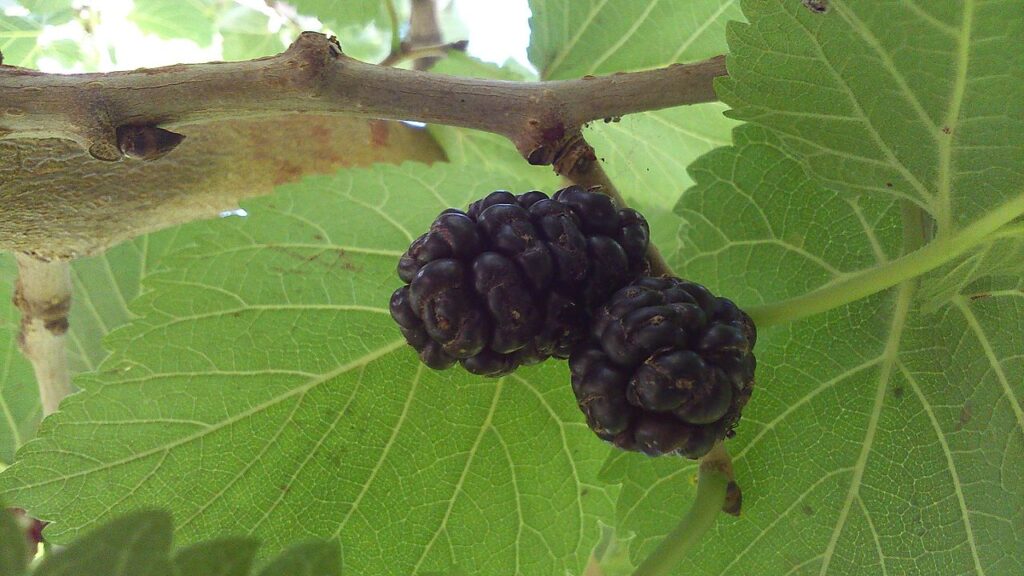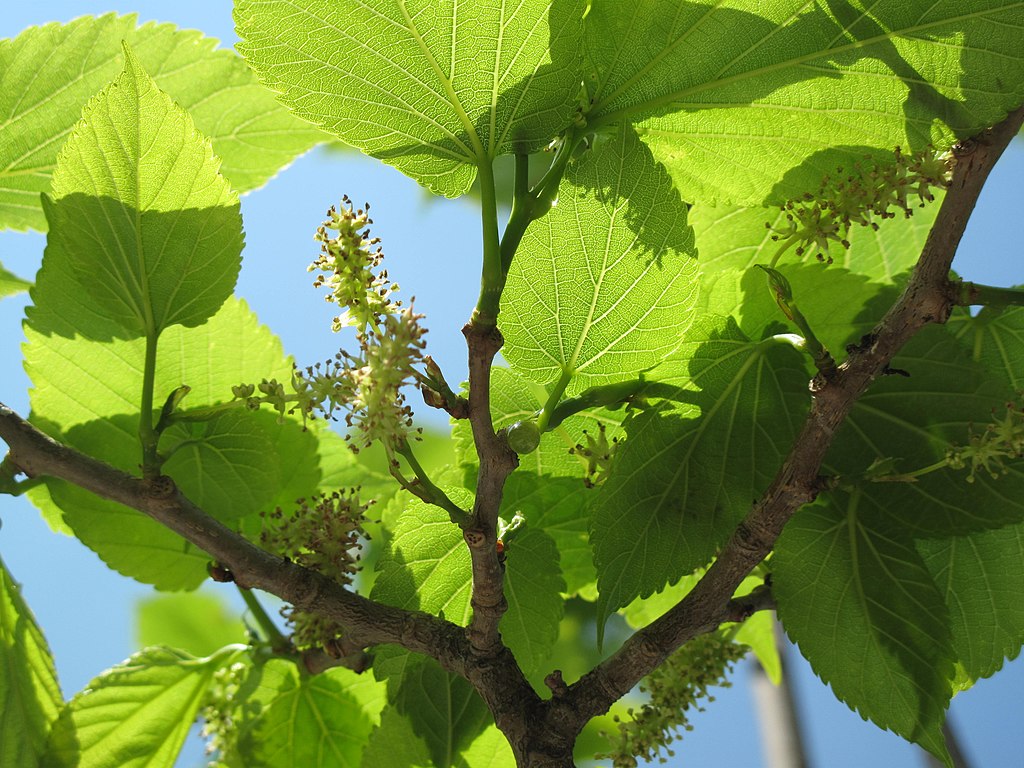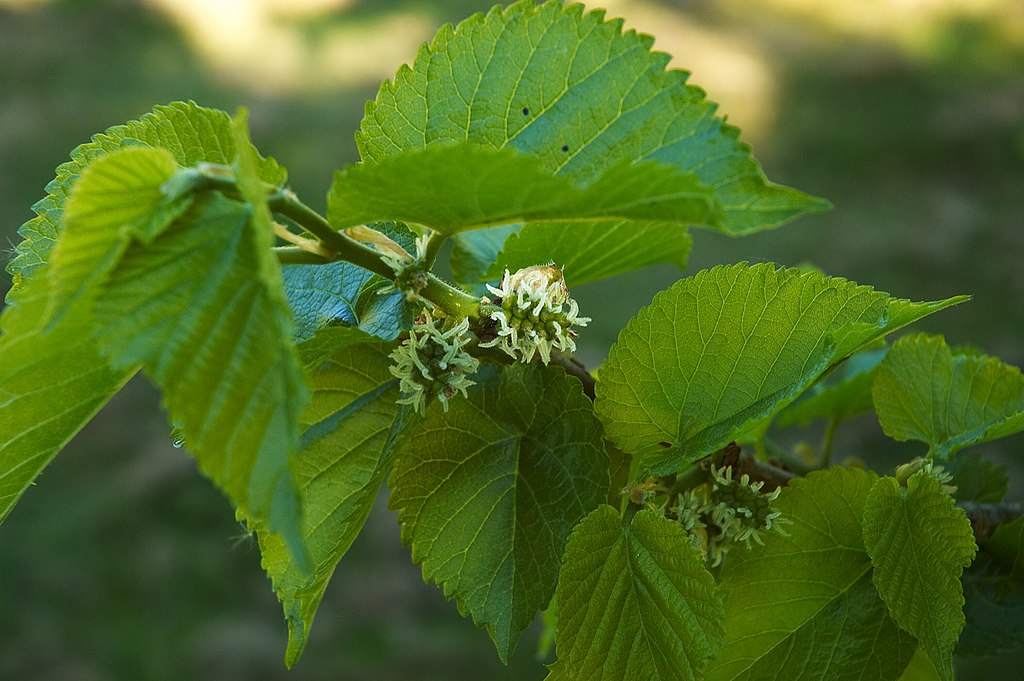
Dwarf mulberry, black mulberry
Dwarf Everbearing Black Mulberry is an easy to grow fruiting bush or tree that is popular with backyard gardeners and food forest advocates. It grows quickly, and you should be able to harvest your first batch of mulberries within a year – maybe even a few months if you plant it early enough!
One of the reasons that black mulberry, also known as Morus nigra, is a favorite of permaculture growers is because it serves a number of uses. While you’ll get a delicious harvest of black mulberries, it also attracts beneficial wildlife, such as birds.
They also provide numerous health benefits, including providing antioxidants and reducing blood pressure. The leaves are a frequent tea ingredient in Asia, and it may reduce blood sugar levels.
And if you’re talking about stacking functions, mulberry leaves make an excellent fodder for sheep, goats, cows, pigs, rabbits, and guinea pigs.

Dwarf Black Mulberry Benefits
- Easy to grow fruit crop
- Fruits when young
- Low maintenance
- Can be pruned to a managed height
- Healthy sweet treat
- May have medicinal benefits
- Excellent in pies, jelly, and jam
Dwarf Black Mulberry Description
Dwarf Everbearing black mulberry, or Morus nigra, is a deciduous tree that can reach up to 15 feet tall if unmanaged. However, it is each to keep pruned back for easy harvest. You can even keep it trimmed low as a bush or grow it in a container.
Regular pruning also stimulates the tree to fruit, so regular pruning is recommended.
The tree sheds its leaves in winter, but it bounces back quickly as soon as the weather warms up and produces fruit all summer long.
Care Tips
Plant in well-draining soil that contains plenty of organic matter. Provide plenty of sunlight, but Dwarf Everbearing black mulberry will tolerate some shade in subtropical and tropical climates.
Ensure weekly watering during the growing season and fertilize in the spring when new shoots start to appear. Prune back during winter when bare to stimulate new branching. However, you can trim them back whenever necessary to promote shape and restrict size.

Buy Mulberry Saplings Here
| Species Name: | Morus nigra |
| Common name(s): | Dwarf Everbearing Black Mulberry |
| Defining Characteristics: | Fast growing fruit tree produces small sweet black fruits in its first year. |
| Watering frequency: | Keep moist to establish and then water weekly as needed |
| Lighting: | Full sunlight to partial shade |
| Soil type: | Average to sandy soil |
| Height: | Grows up to 15 feet wide by 12 feet wide |
| Origin: | India |
| Regional locality: | Unknown |
| USDA Hardiness Zone: | Cold hardy to Zone 7 |
| Toxicity Notes: | Branches contain latex. For more information please visits the ASPCA list of Toxic and Non-Toxic Plants list of Toxic and Non-Toxic Plants |
